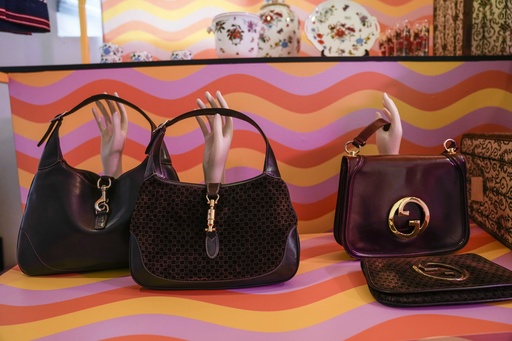
MILAN — A recent analysis by Bain consultancy indicates that global sales of personal luxury items are expected to decline in 2025, marking the first contraction since the Great Recession. Claudia D’Arpizio, who spearheaded the study for Italy’s Altagamma association, voiced concerns that the situation could deteriorate further if tariffs proposed by former President Donald Trump are enforced.
D’Arpizio emphasized the potential challenges, stating, “This could be a nightmare if implemented. European brands could end up being extremely costly in an already high-priced marketplace.” Trump has suggested imposing tariffs of up to 20% on imports, claiming this could generate factory jobs, reduce the federal deficit, and bring down food prices.
Although the study did not specifically analyze the effects of the proposed tariffs, D’Arpizio commented that the impact on luxury producers in Europe would vary depending on how the tariffs are executed, if they are enacted at all. She pointed out that a lack of American luxury alternatives might result in an exemption for some products.
Furthermore, any adverse effects might be mitigated by shifting production to the United States or increasing sales to American tourists traveling in Europe. The United States currently stands as the second-largest luxury market, following Europe, accounting for around 100 billion euros ($106 billion), which is nearly one-third of the global high-end sales across areas such as apparel, leather goods, and footwear.
Bain’s forecasts indicate that luxury good sales will decrease by 2% to 363 billion euros ($385 billion) in the coming year, down from an expected 369 billion euros in 2024. This decline is attributed to significant price hikes imposed by brands as well as ongoing global instability. The luxury sector had an impressive recovery from the COVID-19 pandemic, surpassing 2019 sales figures by 2022, primarily due to previously pent-up consumer spending during lockdowns. Even with next year’s anticipated modest decline, the luxury market is projected to be 28% larger than in 2019 and approximately two-and-a-half times bigger than the lows experienced during the Great Recession in 2008.
D’Arpizio highlighted that social and political unrest, alongside a series of national elections, has negatively impacted consumer confidence. She noted that brands’ strategies to raise prices while concentrating on a more refined type of luxury, often lacking innovation, have significantly affected the willingness of even affluent consumers to make purchases.
The study further reveals that this creativity crisis is causing a disconnect with Gen-Z shoppers, many of whom are currently in their 20s.
Consequently, the luxury market has experienced a reduction of approximately 50 million customers, diminishing to an estimated range of 250 million to 360 million. This marks the first contraction of the luxury consumer base. D’Arpizio remarked, “We have 50 million fewer customers, either due to financial constraints or a lack of interest, as they feel there isn’t enough appealing value.”
